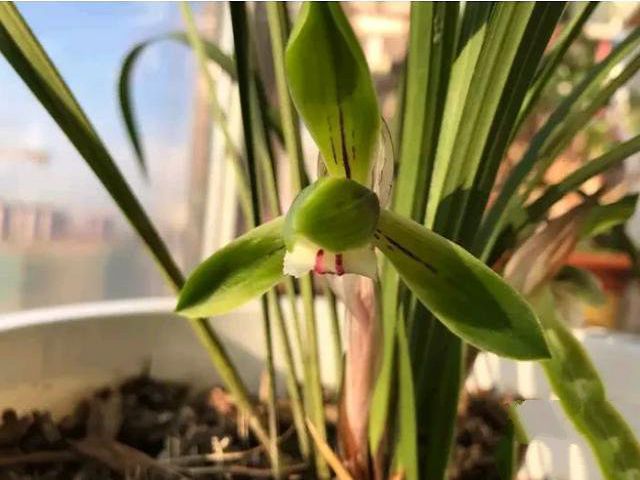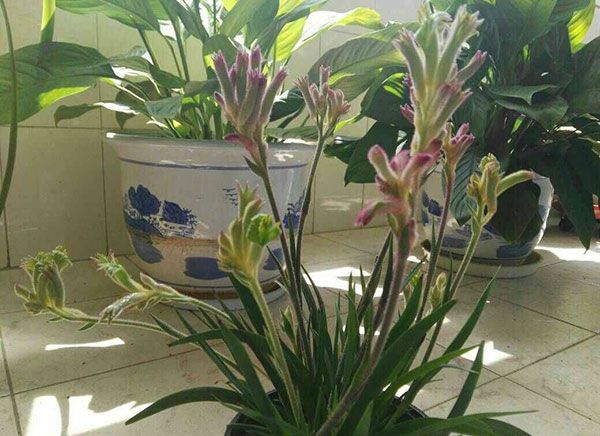The reason for the poor blooming of spring orchids down the mountain

The suitable temperature for the growth of spring orchids is I8-28 degrees, and good ventilation should be ensured when the temperature exceeds 35 degrees in summer. Beware that high temperature with high humidity is the most vulnerable to disease. Chunlan is cold-resistant and has no pressure at minus 5 degrees. Spring is its flowering season, and the spring orchid must be kept at a low temperature to ensure its hibernation in order to accumulate nutrients and pregnant buds. This is very important. At this time, the temperature should be controlled at 3-10 degrees, and the time is about 40 days, that is, the so-called low-temperature vernalization, which inhibits physiological growth and uses nutrients for reproductive growth needed for flowering. If there is no such process, it is difficult to blossom or the flowering is not correct and fragrant.
The reason why your downhill spring orchid does not bloom well is straightforward: the bad blossom is that the plant material is too wet, and the material of flowerpot glaze pot is disadvantageous to the development of root system. It can be judged from the appearance of anthrax spots in orchid leaves and the presence of moldy matter in plant materials. Of course, the orchid bud has something to do with the amount of water unearthed.
Figure 1: leaf teeth hang white leaf margin browning, red circle 2 mesophyll hidden anthrax spot, red circle 3 plant mildew bacteria become too wet. If you look at the overall blue leaf color, there is a partial chlorosis and yellowing phenomenon. Water control spray imipramine control.
Spring orchid is cold-resistant, and the original mountain orchid has better cold resistance. This is the biggest difference between downhill Cymbidium and common greenhouse science and technology grass. Chunlan can live outdoors at minus 5 degrees in winter. The mountain orchid grows naturally in the cold and windy environment, which shows that its cold resistance is stronger. Flower cultivation habits, in addition to heavy snow and frost in winter, the best outdoor environment, as far as possible to give its wild original ecological environment. Orchid frozen leaves are difficult to freeze roots, wild environment has fallen leaves rotten soil, soil heat preservation, artificial pot indoor shelter. It is better to be outdoors as long as it is no less than 10 degrees below zero. What's more, your winter is 7-23 degrees!
Down the mountain Lanben mountain students, fend for themselves in the environment to survive. Therefore, do not arbitrarily change its original environment. On the pot, only cut off the dead leaves, rot and hurt the roots, and retain the native soil. There are probiotics of origin symbiosis with orchid in this soil, which can urge it to adapt to the new environment as soon as possible.
After pruning, do not superfluous: root washing, disinfection, which will destroy its original state, Xiashan orchid is very antibacterial, has the ability to adapt to a variety of bacteria and symbiosis with it. This is the biggest difference between greenhouse orchid and greenhouse orchid, and the same plant does not need to be sterilized. After pruning, dry the wound and put it in the basin. The dry and loose plant material is used to naturally fill the orchid root, and put it in a cool and ventilated place.
Do not water after the basin, because the cut needs to be restored, watering is easy to cause infection. It will be watered in four days. After putting on the basin, leave it in a cool place for 7 to 10 days and bask in a soft light before 10:00 noon. Get rid of the sun after 9 o'clock in summer. Transfer to normal management after more than a month.
- Prev

The bracts of Cymbidium and Cymbidium can be vernalized by a few centimeters in length.
The bracts of Cymbidium and Cymbidium can be vernalized by a few centimeters in length.
- Next

Is kangaroo orchid an orchid? How to raise kangaroo orchid
Is kangaroo orchid an orchid? How to raise kangaroo orchid
Related
- Is the orchid suitable for indoor use? Is it good for the body?
- How to prevent the empty root of orchids?
- What to do after the crab claw orchid is withered?
- Why are the leaves of orchids always yellow? Fertilizing and watering.
- Can the root of the gentleman orchid be saved if it is rotten?
- Diagnosis and treatment of cotton-blowing beetle insects in Cymbidium
- There is a way for a gentleman's orchid to rot.
- What is the most suitable temperature and humidity for the orchid?
- How to raise a gentleman's orchid? Cultivation techniques of Cymbidium
- How to prepare the nutritive soil for the cultivation of Cymbidium

